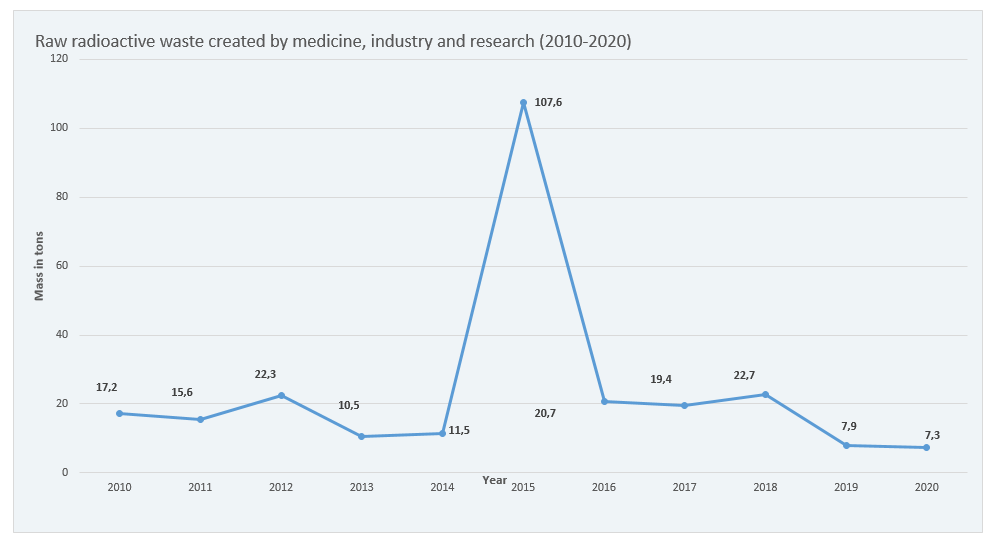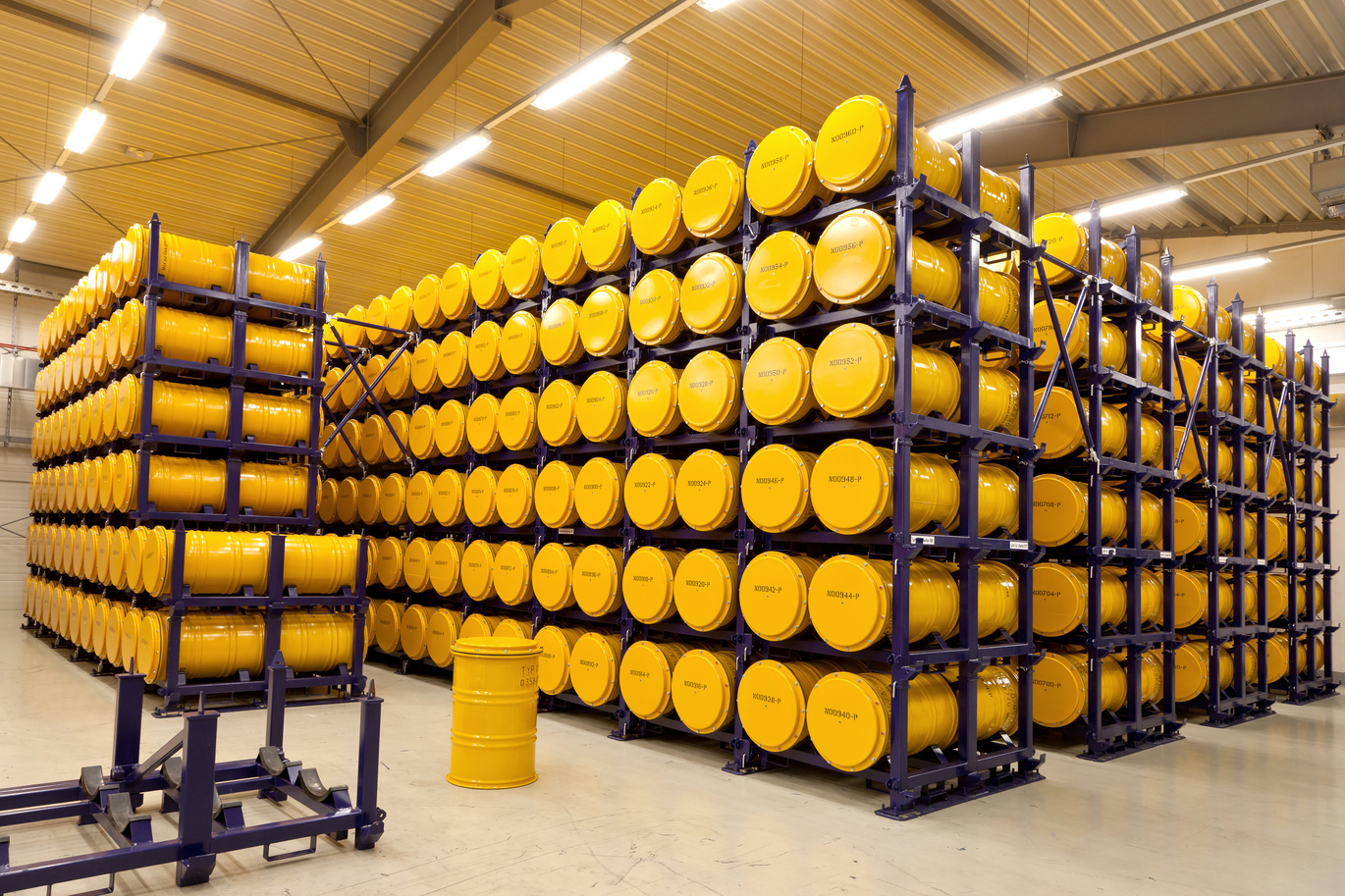Inventory Around 12 200 containers with low- or intermediate-level radioactive waste are currently located in the interim storage facility of Nuclear Engineering Seibersdorf.
Only low- and intermediate-level radioactive waste is produced in Austria. 97 % of this waste has a half-life of up to 30 years. The remaining 3 % have a longer half-life. This waste is currently stored in barrels in the interim storage facility of Nuclear Engineering Seibersdorf.
In addition to the drums there are several special types of containers for big und bulky components and materials from decommissioning Seibersdorf’s research reactor as well as the operation of Vienna University of Technology’s research reactor. This waste has a high dose rate and/or a high activity concentration. Moreover a container that was specifically designed for the storage of high-activity sealed sources is also located on site in Seibersdorf.
In Austria around 10 to 20 tonnes of raw radioactive waste are created in medicine, industry and research each year. The following graph shows the amount of radioactive waste that was produced in the previous years. Due to the decommissioning of an old lab facility at an Austrian university, a higher amount of radioactive waste occurred in 2015.

The largest amount of radioactive waste stems from the decontamination and dismantling of facilities (decommissioning). These facilities are mainly old research facilities, many of which are/were located at the site in Seibersdorf, such as the Astra Research Reactor and old research laboratories. The amount of radioactive waste resulting from decommissioning activities fluctuates substantially each year (on average 280 tonnes a year) and depends on the type of projects that are being carried out.
The radioactive materials arising from decommissioning projects are sorted and decontaminated through complex techniques in order to be able to clear the majority of the material. This means that the activity is small enough to not pose any danger and the material may be disposed of in a regular landfill. In this manner the waste from decommissioning projects can be reduced by 80 % on average.
The residual radioactive waste is collected at NES and conditioned using the latest treatment methods.
The radioactive waste is transferred into a state that is chemically stable and either completely insoluble or not readily soluble in water. In addition the waste volume is reduced as much as possible (conditioning). Depending on the material different techniques are used to achieve this.
Future Waste
The estimate of the radioactive waste produced in future years is subject to uncertainties, as it is hard to predict future developments, new applications of radioactive substances or the replacement of current applications in detail.
After the shutdown of the research reactor at the Atominstitut of Vienna University of Technology and the decommissioning of the facilities at the site in Seibersdorf the amount of radioactive waste arising from decommissioning projects will go down significantly.
The amount of waste produced in medicine, industry and science will decrease in the future as waste reduction measures are put into place for all applications and new techniques are developed which do not require radioactive substances.
In addition a part of the original radioactive waste can be cleared and disposed of in regular ways by 2045. The cleared material’s activity is so small that it will no longer pose any danger.
